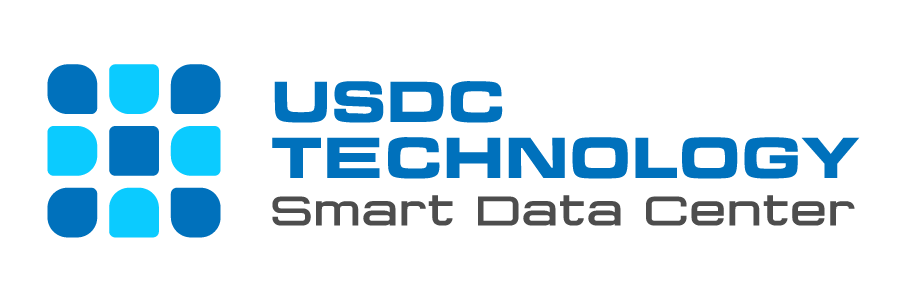David Groombridge, research vice president at Gartner, says with CEOs and boards striving to find growth through direct digital connections with customers, the priorities of a CIO must reflect the same business imperatives, which run through each of Gartner’s top strategic tech trends for 2022.
According to Gartner, the top strategic technology trends for 2022 are:
Generative Artificial Intelligence
Gartner says one of the most visible and powerful AI techniques coming to market is generative AI – machine learning methods that learn about content or objects from their data, and use it to generate brand-new, completely original, realistic artefacts.
Generative AI can be used for a range of activities such as creating software code, facilitating drug development and targeted marketing, but also misused for scams, fraud, political disinformation, forged identities and more. By 2025, Gartner expects generative AI to account for 10% of all data produced, up from less than 1% today.
Data Fabric
According to Gartner, the number of data and application silos has surged in the last decade, while the number of skilled personnel in data and analytics (D&A) teams has either stayed constant or even dropped.
Data fabrics – a flexible, resilient integration of data across platforms and business users – have emerged to simplify an organization’s data integration infrastructure and create a scalable architecture that reduces the technical debt seen in most D&A teams due to the rising integration challenges.
“A data fabric’s real value is its ability to dynamically improve data usage with its inbuilt analytics, cutting data management efforts by up to 70% and accelerating time to value,” says Gartner.
Distributed Enterprise
With the rise in remote and hybrid working patterns, traditional office-centric organizations are evolving into distributed enterprises comprised of geographically dispersed workers.
“This requires CIOs to make major technical and service changes to deliver frictionless work experiences, but there is another side to this coin: the impact on business models,” says Groombridge. “For every organization, from retail to education, their delivery model has to be reconfigured to embrace distributed services. The world didn’t think they’d be trying on clothes in a digital dressing room two years ago.”
Gartner expects that by 2023, 75% of organizations that exploit distributed enterprise benefits will realize revenue growth 25% faster than competitors.
Cloud-Native Platforms (CNPs)
To truly deliver digital capabilities anywhere and everywhere, Gartner says enterprises must turn away from the familiar “lift and shift” migrations and toward CNPs. CNPs use the core capabilities of cloud computing to provide scalable and elastic IT-related capabilities “as a service” to technology creators using internet technologies, delivering faster time to value and reduced costs.
For this reason, Gartner predicts that cloud-native platforms will serve as the foundation for more than 95% of new digital initiatives by 2025 — up from less than 40% in 2021.
Autonomic Systems
As enterprises grow, traditional programming or simple automation will not scale, Gartner says. Autonomic systems are self-managing physical or software systems that learn from their environments.
Unlike automated or even autonomous systems, autonomic systems can dynamically modify their own algorithms without an external software update, enabling them to rapidly adapt to new conditions in the field, much like humans can.
“Autonomic behavior has already made itself known through recent deployments in complex security environments, but in the longer term, will become common in physical systems such as robots, drones, manufacturing machines and smart spaces,” says Groombridge.
Decision Intelligence (DI)
An organization’s decision-making competency can be a significant source of competitive advantage, but it’s becoming more demanding.
Decision intelligence is a practical discipline used to improve decision-making by explicitly understanding and engineering how decisions are made, and outcomes evaluated, managed and improved by feedback. Gartner predicts that in the next two years, a third of large organizations will be using decision intelligence for structured decision-making, to improve competitive advantage.
Composable Applications
In the continuously changing business context, Gartner says demand for business adaptability directs organizations toward technology architecture that supports fast, safe and efficient application change.
Composable application architecture empowers such adaptability, and those that have adopted a composable approach will outpace competition by 80% in the speed of new feature implementation.
“In turbulent times, composable business principles help organizations master the accelerated change that is essential for business resilience and growth. Without it, modern organizations risk losing their market momentum and customer loyalty,” says Groombridge.
Hyperautomation
Hyperautomation enables accelerated growth and business resilience by rapidly identifying, vetting and automating as many processes as possible.
“Gartner research shows that the top-performing hyperautomation teams focus on three key priorities: improving the quality of work, speeding up business processes, and enhancing the agility of decision-making,” says Groombridge. “Business technologists supported an average of 4.2 automation initiatives in the past year, too.”
Privacy-Enhancing Computation (PEC)
As well as dealing with maturing international privacy and data protection legislation, Gartner says CIOs must avoid any loss of customer trust resulting from privacy incidents. Therefore, the analyst firm expects 60% of large organizations to use one or more privacy-enhancing computation techniques by 2025.
PEC techniques – which protect personal and sensitive information at a data, software or hardware level – securely share, pool and analyze data without compromising confidentiality or privacy. Current use cases exist in many verticals as well as with public cloud infrastructures (e.g., trusted execution environments).
Cybersecurity Mesh
“Data is strung throughout many of this year’s trends, but it is only useful if enterprises can trust it,” says Groombridge. “Today, assets and users can be anywhere, meaning the traditional security perimeter is gone. This requires a cybersecurity mesh architecture (CSMA).”
CSMA helps provide an integrated security structure and posture to secure all assets, regardless of location. By 2024, organizations adopting a CSMA to integrate security tools to work as a cooperative ecosystem will reduce the financial impact of individual security incidents by an average of 90%.
AI Engineering
IT leaders struggle to integrate AI within applications, wasting time and money on AI projects that are never put in production, or struggling to retain value from AI solutions once released. AI engineering is an integrated approach for operationalizing AI models.
“For fusion teams working on AI, the real differentiator for their organizations will lie in their ability to continually enhance value through rapid AI change,” says Groombridge. “By 2025, the 10% of enterprises that establish AI engineering best practices will generate at least three times more value from their AI efforts than the 90% of enterprises that do not.”
Total Experience (TX)
According to Gartner, TX is a business strategy that combines the disciplines of customer experience (CX), employee experience (EX), user experience (UX) and multiexperience (MX). The goal of TX is to drive greater customer and employee confidence, satisfaction, loyalty and advocacy. Organizations will increase revenue and profit by achieving adaptive and resilient TX business outcomes.
This year’s top strategic technology trends highlight those trends that will drive significant disruption and opportunity over the next five to 10 years. Gartner’s clients can read more in the Gartner Special Report “Top Strategic Technology Trends for 2022.”
News Contact:
Universal Smart Data Center Technology
Phone: (+84) 28 73080708
Email: info@usdc.vn


